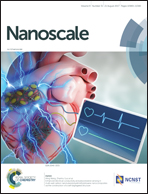Defect induced p-type conductivity in zinc oxide at high temperature: electron paramagnetic resonance spectroscopy
Abstract
High-temperature electron paramagnetic resonance (EPR) measurements were applied to a ZnO nanocrystalline (50 nm) sample, synthesized via a solid co-precipitation method, in order to understand the behavior of intrinsic defect centers at high temperatures. It has been observed that the defect centers on the surface play a crucial role in the conductivity behavior of ZnO. Above 300 °C only surface defects can be visible in EPR spectra for ZnO nanocrystals which indicate p-type conductivity.



 Please wait while we load your content...
Please wait while we load your content...